Pope Francis

On Wednesday during his weekly address, Pope Francis condemned consumerism and the "culture of waste" especially pertaining to food. Wednesday was also the day the United Nations launched an anti-food waste campaign to mark World Environment Day. The UN’s Food and Agriculture Organizatio estimates 1.3 billion tons of food are lost or wasted every year. The Washington Post reports:
“Throwing away food is like stealing from the table of those who are poor and hungry,” he said during his weekly audience in St. Peter’s Square.
Read more here.
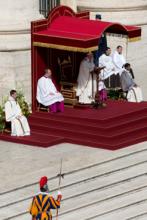
Pope Francis on Wednesday denounced consumerism and what he called the “culture of waste” of modern economies, especially when it comes to food.
“Throwing away food is like stealing from the table of those who are poor and hungry,” he said during his weekly audience in St. Peter’s Square.
His words came on the day the United Nations launched an anti-food waste campaign to mark World Environment Day.
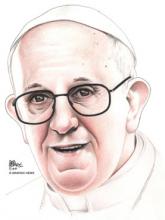
Is Pope Francis endorsing heresy?
It might look that way from the eye-catching headlines this week that made it appear everyone was bound for heaven — “even atheists!” — thanks to Jesus’ death on the cross.
The passage that prompted the reports came from Francis’ brief homily at the informal morning Mass that he celebrates in the chapel at the Vatican guesthouse.
Speaking on Wednesday, Francis said that as human beings created in the image of God, everyone has a “duty to do good.”
“The Lord has redeemed all of us, all of us, with the Blood of Christ: all of us, not just Catholics. Everyone! ‘Father, the atheists?’ Even the atheists,” he said, answering his own query. “Everyone! And this blood makes us children of God of the first class! We are created children in the likeness of God and the blood of Christ has redeemed us all!”
Cue the jaw dropping and head scratching. Atheists were pleasantly surprised, conservative Catholics were dazed and confused, and the pope’s comments raced around the Internet; for a while they were the second-most shared piece on Reddit.
So was Francis preaching a form of “universalism?" That is the unorthodox teaching that says, essentially, that all faiths are equal and all are going to heaven, especially if you are nice to people here on earth. It’s also a heresy that Francis’ predecessor, Benedict XVI, spent a career quashing every time he thought he thought he spied a hint of it in some theologian’s writings.
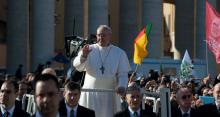
In his two months as leader of the world’s 1.2 billion Roman Catholics, Pope Francis has captured the imagination not only of his own flock, but that of the world at large.
Many of us, Catholic or not, seem to hang on his every word both for spiritual guidance and clues to the personality of the man we collectively are getting to know as perhaps the most recognizable Christian on the planet.
Two new books offer further insights into the heart and mind of the former Jorge Bergoglio through his own words. Both are fascinating reads for papal watchers and news junkies alike, painting a vivid portrait of the man, the leader, and the humble follower of Christ.

Pope Francis is warning Catholics not to demonize those who are not members of the church, and he specifically defended atheists, saying that building walls against non-Catholics leads to “killing in the name of God.”
“(T)his ‘closing off’ that imagines that those outside, everyone, cannot do good is a wall that leads to war and also to what some people throughout history have conceived of: killing in the name of God,” Francis said Wednesday in remarks at the informal morning Mass that he celebrates in the chapel at the Vatican guesthouse where he lives.
“And that, simply, is blasphemy. To say that you can kill in the name of God is blasphemy.”
Francis explained that doing good is not a matter of faith: “It is a duty, it is an identity card that our Father has given to all of us, because he has made us in his image and likeness.”

Last week Pope Francis spoke out against the cult of money. Here is how Catholic News Service's Carol Glatz summarized his remarks:
Pope Francis called for global financial reform that respects human dignity, helps the poor, promotes the common good and allows states to regulate markets.
"Money has to serve, not to rule," he said in his strongest remarks yet as pope concerning the world's economic and financial crises.
A major reason behind the increase in social and economic woes worldwide "is in our relationship with money and our acceptance of its power over ourselves and our society," he told a group of diplomats May 16.
"We have created new idols" where the "golden calf of old has found a new and heartless image in the cult of money and the dictatorship of an economy which is faceless and lacking any truly humane goal."

For centuries, popes sponsored the work of artists such as Michelangelo, Raffaello, or Bernini, who went on to create some of their masterpieces within the very walls of the Vatican.
Yet over time, the marriage between art and faith grew stale — the Vatican’s culture minister even called it a “divorce” — with the Roman Catholic Church finding itself estranged from the art world it did so much to create.
Now, in a bid to revive its ancient tradition of arts patronage, the Holy See will participate with its own pavilion at the 2013 Venice Biennale, a leading international arts festival.

More than two months after his resignation, Pope Emeritus Benedict XVI will return to the Vatican on Thursday to live in a small convent that has been recently renovated for his needs.
Benedict’s return will face the Vatican with the unprecedented situation of a reigning pope and a retired pope living a short distance from each other.
The potential difficulty is compounded by the fact that Benedict’s personal secretary, Archbishop Georg Gaenswein, will move in with the former pope while he continues to serve as Pope Francis’ Prefect of the Papal Household, charged with setting his schedule and audiences.
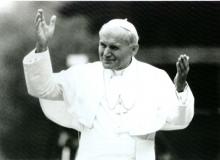
Reports this week that the late Pope John Paul II may be on the verge of sainthood after a second miracle was credited to his intercession aren’t a huge surprise: When he died eight years ago, crowds were already clamoring for his canonization, and Pope Benedict XVI quickly waived the usual five-year waiting period to get the process rolling.
But the news that Pope Francis, just six weeks on the job, has cleared the way for the long-stalled canonization of martyred Salvadoran Archbishop Oscar Romero is a stunner that sends another important signal about the new pope’s priorities.
“Sainthood is often as much about politics and image as anything else,” said the Rev. Harvey Egan, a Jesuit priest and professor emeritus of theology at Boston College.
“It’s not surprising to me that this present pope being from South America, having the same inclinations as Romero, would unblock the process and say ‘Push his cause through,’ and I think rightly so.”

When you’re the pope, few things matter as much as what you say and, especially, where you say it.
From the pulpit of St. Peter’s Basilica or an outdoor altar erected in St. Peter’s Square, popes can command global media attention. Pope Francis, however, has settled in with a smaller congregation for his homilies that’s more in keeping with his low-key style.
Every day at 7 a.m., Francis celebrates Mass in the chapel of the Casa Santa Marta, the Vatican’s hotel-style guesthouse he has chosen to call home instead of the luxurious papal apartments. His brief, colorful homilies are delivered to small groups of Vatican workers, from policemen to doctors and bank employees.
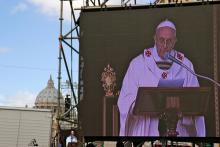
Vatican employees won’t receive the special bonus they are traditionally awarded when a new pope is elected, the Vatican confirmed on Thursday, under orders from Pope Francis to give extra money to charity instead.
“On account of the difficult situation of the general economy, it seemed neither possible nor opportune to burden Vatican institutions with a considerable unforeseen extraordinary expense,” the Vatican’s chief spokesman, the Rev. Federico Lombardi, said in an emailed statement.
In place of the employees’ bonus, Pope Francis ordered Vatican officials to make a donation to some “charitable organizations.”
The money will be drawn from the pontiff’s personal charity budget “as a sign of the church’s attention for the many people who are suffering” from the global economic slowdown, Lombardi said.

Nearly a year after the Vatican announced a makeover of the largest umbrella group for American nuns, Pope Francis has directed that the overhaul of the Leadership Conference of Women Religious continue.
The decision, while not entirely unexpected, could nonetheless bring an end to Francis’ honeymoon with the many American Catholics who had viewed the crackdown on nuns as heavy-handed and unnecessary.
Archbishop Gerhard Ludwig Mueller, who heads the Vatican’s Congregation for the Doctrine of the Faith, met on Monday with the LCWR’s leadership for the first time since Francis’ election on March 13.
According to a Vatican statement, during a recent discussion of the case with Mueller, Francis “reaffirmed the findings” of the Vatican investigation and the “program of reform” for LCWR that was announced on April 18, 2012.
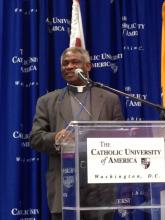
On April 11, 1963 Pope John XXIII published an encyclical some initially dismissed as naive and myopic, as too liberal and too lofty. But today, his "Pacem in Terris" is generally lauded as genius and prophetic – well ahead of its time on the issues of human rights, peace, and equality.
As Maryann Cusimano Love, a Catholic professor of international relations, notes, the same year “Pacem in Terris” was published, spelling out the theological mandate for political and social equality for all people, women in Spain were not allowed to open bank accounts, Nelson Mandela was standing trial for fighting apartheid, and Walter Ciszek was serving time in a Soviet gulag simply for being Catholic.
On Monday and Tuesday, the Catholic Peacebuilding Network hosted a two-day conference at the Catholic University of America, commemorating 50 years since the publication of "Pacem in Terris.”
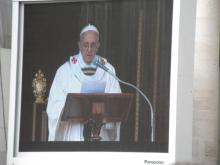
From the very first moment of his unexpected election as Pope Francis, Cardinal Jorge Bergoglio of Argentina has embraced a series of small departures from established tradition.
He took his papal name from a great nonconforming saint of the Middle Ages — and one that no other pope in the history of the Roman Catholic Church has taken. He then refused to stand on an elevated platform that would separate him from his “brother cardinals,” and asked the people of Rome to bless him rather than receive his blessing. He even insisted on returning to his hotel to settle his account (as though his credit were in any doubt).
Everyone who knew Bergoglio saw in him an unconventional and even unpredictable figure. He lived in Buenos Aires in a modest apartment rather than in the archbishop’s palace. He dispensed with a private limousine and took public transportation to work. He even cooked his own meals at home in his own kitchen.
Now, as pope, he has continued this pattern by ignoring long-settled traditions of what a pope should wear, where he should reside, and how he should conduct himself in public functions. Francis has chosen not wear the gold papal cross to which he is entitled, instead wearing the more simple cross he wore in Argentina. He also seems satisfied with normal men’s footwear, avoiding the elegant red loafers Pope Benedict normally wore in public.

Pope Francis has won widespread acclaim thus far in his nascent papacy with popular gestures like washing the feet of juveniles during Holy Week and refusing many papal perks. But now comes the hard part of his new job: reforming the Vatican.
The Roman Curia, as the central administration of the Catholic Church is known, has been riven by scandals and allegations of infighting and careerism, which helped undermine Pope Emeritus Benedict XVI’s reign and reportedly pushed him to resign.
The dysfunction was so bad that reforming the Curia became a rallying cry for many cardinals at the conclave that elected Francis. But will he deliver on the promise of reform?

He has been Pope Francis for less than a month, but the keep-it-simple prelate from Argentina is a wow with American Catholics — at least for now.
The tables may turn on Francis once media attention moves from his no-fuss style to his substantive actions, said a Vatican expert Wednesday.
The former archbishop of Buenos Aires has an 84 percent favorable rating among U.S. Catholics, including 43 percent who hold a very favorable view of him, according to a new survey by the Pew Forum on Religion & Public Life.
Pope Francis on Wednesday said women play a “fundamental role” in the Catholic Church as those who are mostly responsible for passing on the faith from one generation to the next.
While the new pope stopped far short of calling for women’s ordination or giving women more decision-making power in the church, his remarks nonetheless signaled an openness to women that’s not often seen in the church hierarchy.
“In the church and in the journey of faith, women have had and still have a special role in opening doors to the Lord,” the Argentine pontiff said during his weekly audience in St. Peter’s Square.
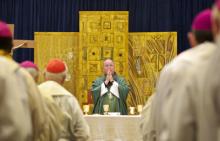
When New York Cardinal Timothy Dolan told national news programs on Easter Sunday that Catholic leaders need to do a better job of showing that their opposition to gay marriage is not “an attack on gay people,” the nation’s top Catholic bishop seemed to be signaling an important shift in tone, if not policies, that acknowledges two new realities.
One is the election of a new pope, Francis, who in less than a month has demonstrated a clear preference for engagement and inclusion (washing the feet of women and Muslim inmates at a Rome youth prison, for example) rather than the confrontation and political purism that often found favor under his predecessor, Benedict XVI.
The other is the ongoing shift in favor of same-sex marriage in the court of public opinion and — if recent arguments on Proposition 8 and the Defense of Marriage Act are any guide — perhaps soon in the U.S. Supreme Court.
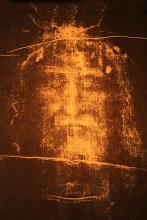
New scientific tests on the Shroud of Turin, which went on display Saturday in a special TV appearance introduced by the pope, date the cloth to ancient times, challenging earlier experiments that dated it only to the Middle Ages.
Pope Francis sent a special video message to the televised event in the Cathedral of Saint John the Baptist in Turin, Italy, which coincided with Holy Saturday, when Catholics mark the period between Christ’s crucifixion on Good Friday and his resurrection on Easter Sunday.
The Vatican, tiptoeing carefully, has never claimed that the 14-foot linen cloth was used to cover Christ after he was taken from the cross 2,000 years ago, as some believers claim.

The Vatican on Friday dismissed criticism of Pope Francis’ decision to wash the feet of two women during a Maundy Thursday Mass at a Rome youth prison.
The move has come under fire from Catholic traditionalists who say that the rite is a re-enactment of Jesus washing the feet of the 12 apostles before his death, and thus should be limited only to men.
Traditionally, popes have washed the feet of 12 priests during a solemn Mass in Rome’s St. John Lateran Basilica.